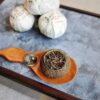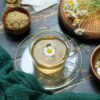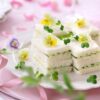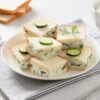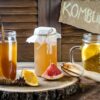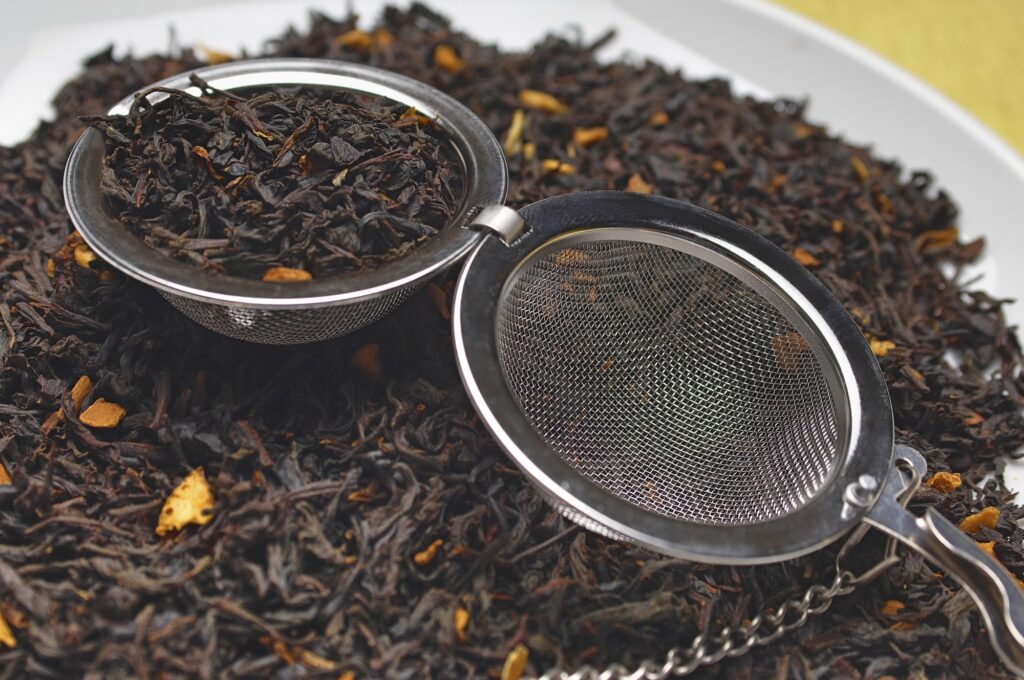
Are you a tea lover? Do you enjoy the simple pleasure of a warm cup of tea, soothing both your senses and your soul? If so, then you know the importance of brewing the perfect cup. And one essential tool in achieving tea perfection is a tea strainer.
So, grab your favorite mug and get ready to embark on a tea-straining journey that will elevate your tea-drinking experience to a whole new level.
Why use a tea strainer?
Tea strainers play a crucial role in the tea brewing process, allowing you to enjoy a smooth and flavorful cup of tea without any unwanted debris or loose tea leaves. They are designed to filter out tea leaves, ensuring a clean and enjoyable drinking experience. Whether you are using loose leaf tea or tea bags, a tea strainer is indispensable for achieving the perfect brew.
Tea strainers not only aid in removing loose tea leaves but also help to enhance the overall flavor and aroma of your tea. They prevent oversteeping, which can result in a bitter taste, by providing a controlled flow of water through the leaves. By using a tea strainer, you have more control over the brewing process, allowing you to extract the desired flavors and aromas from your tea leaves.
Furthermore, tea strainers offer versatility and convenience. They can be used with various types of tea, such as black, green, herbal, or fruit teas. Whether you prefer a strong and robust brew or a delicate and fragrant cup, a tea strainer can help you achieve the desired strength and flavor profile.
Types of tea strainers
When it comes to tea strainers, there is a wide variety of options available in the market. Each type of strainer has its own unique features and benefits. Let’s explore some of the most common types of tea strainers:
1. Metal Mesh Strainers: Metal mesh strainers are the traditional and most widely used type of tea strainers. They are typically made of stainless steel or silver and consist of a fine mesh that effectively filters out tea leaves while allowing the flavors and aromas to pass through. Metal mesh strainers are durable, easy to clean, and suitable for all types of loose leaf teas.
2. Tea Ball Infusers: Tea ball infusers are small, perforated metal balls that open up to hold loose tea leaves. They are a popular choice for those who prefer loose leaf tea but don’t want the hassle of cleaning up loose leaves from their teapot or cup. Tea ball infusers are compact, easy to use, and provide a convenient way to brew individual cups of tea.
3. Tea Bag Squeezer: If you often use tea bags, a tea bag squeezer can be a handy accessory. It is designed to squeeze out every last drop of tea from the bag, ensuring you get the most out of your tea bag without any mess. Tea bag squeezers are usually made of stainless steel and are easy to clean and maintain.
4. Teapot Strainers: Teapot strainers are large, mesh strainers that sit inside the spout of a teapot. They are designed to catch any loose tea leaves when pouring the tea into cups, ensuring a clean and smooth pour. Teapot strainers are ideal for brewing large quantities of tea and are a must-have for tea enthusiasts who enjoy hosting tea parties or gatherings.
5. Silicone Tea Infusers: Silicone tea infusers are a more modern and playful alternative to traditional tea strainers. They are made of food-grade silicone and come in various fun shapes, such as animals, fruits, or flowers. Silicone tea infusers are easy to clean, heat-resistant, and add a touch of whimsy to your tea brewing experience.
Choosing the right tea strainer for your needs
When selecting a tea strainer, there are a few factors to consider to ensure you choose the right one for your needs:
1. Material: Tea strainers are available in various materials, including stainless steel, silver, silicone, and mesh. Each material has its own advantages and considerations. Stainless steel and silver strainers are durable and long-lasting, while silicone strainers are flexible and easy to clean. Consider your preferences and requirements when choosing the material for your tea strainer.
2. Size: Tea strainers come in different sizes, ranging from small individual infusers to larger teapot strainers. Consider the volume of tea you usually brew and whether you prefer brewing individual cups or larger pots. Choose a size that suits your brewing habits and preferences.
3. Design: Tea strainers come in a range of designs, from simple and functional to decorative and whimsical. Consider the design that resonates with your personal style and adds a touch of enjoyment to your tea brewing experience.
4. Ease of Use: Look for a tea strainer that is easy to use and doesn’t require any complicated steps. Consider features such as a hinged opening or a handle for convenient removal of the tea leaves.
By considering these factors, you can choose a tea strainer that meets your specific needs and enhances your tea brewing experience.
How to use a tea strainer
Using a tea strainer is a simple and straightforward process. Here’s a step-by-step guide on how to use a tea strainer:
1. Prepare Your Tea: Begin by preparing your tea, whether it’s loose leaf tea or a tea bag. Follow the recommended brewing instructions for the specific type of tea you are using.
2. Place the Tea Strainer: If using loose leaf tea, place the desired amount of tea leaves into the tea strainer. Make sure not to overfill the strainer, as it may hinder the brewing process.
3. Infuse in Hot Water: Place the tea strainer with the tea leaves into your teapot, mug, or cup. Pour hot water over the tea leaves, allowing them to steep for the recommended time.
4. Remove the Strainer: Once the tea has finished steeping, carefully remove the tea strainer from the teapot or cup. Be cautious, as both the strainer and the tea may be hot.
5. Enjoy Your Tea: Pour the brewed tea into your favorite teacup or mug and savor the flavors and aromas. If desired, add any additional ingredients, such as milk, honey, or lemon, to enhance the taste.
By following these steps, you can use your tea strainer effectively and ensure a delightful cup of tea every time.
Common mistakes to avoid when using a tea strainer
While using a tea strainer is a simple process, there are a few common mistakes that can affect the quality of your tea. Here are some mistakes to avoid when using a tea strainer:
1. Overfilling the Strainer: Avoid overfilling the tea strainer with tea leaves, as this can prevent proper water flow and result in a weak or under-extracted brew. Follow the recommended measurements for the specific type of tea you are using.
2. Using the Wrong Size Strainer: Using a tea strainer that is too small for the amount of tea leaves can result in a cramped strainer, hindering the brewing process. Ensure your tea strainer is large enough to accommodate the desired quantity of tea leaves.
3. Not Cleaning the Strainer Properly: Neglecting to clean your tea strainer thoroughly after each use can lead to a buildup of residue and affect the flavor of your tea. Take the time to rinse and clean your tea strainer properly to maintain its effectiveness.
4. Using a Damaged Strainer: A damaged tea strainer, such as one with torn mesh or loose hinges, can allow tea leaves to escape into your cup, affecting the overall quality of your tea. Regularly inspect your tea strainer for any signs of damage and replace it if necessary.
By avoiding these common mistakes, you can ensure that your tea strainer performs optimally and delivers a delightful cup of tea every time.
Cleaning and maintenance of tea strainers
Proper cleaning and maintenance of your tea strainer are essential to ensure its longevity and effectiveness. Here are some tips for cleaning and maintaining your tea strainer:
1. Rinse After Use: After each use, rinse your tea strainer under warm running water to remove any tea leaves or residue. Gently tap the strainer to dislodge any trapped leaves.
2. Use a Cleaning Brush: For more thorough cleaning, use a small cleaning brush to scrub the mesh or perforations of your tea strainer. This will help remove any stubborn residue or stains.
3. Avoid Harsh Chemicals: Avoid using harsh chemicals or abrasive cleaning agents on your tea strainer, as they can damage the material or leave behind unwanted flavors. Stick to mild dish soap or baking soda for cleaning.
4. Air Dry Properly: After cleaning, allow your tea strainer to air dry completely before storage. This helps prevent the growth of mold or bacteria.
5. Store in a Dry Place: Store your tea strainer in a dry place, away from moisture and direct sunlight. This will help maintain its shape and prevent any potential damage.
By following these cleaning and maintenance practices, you can prolong the lifespan of your tea strainer and ensure it continues to deliver optimal performance in each brewing session.
Tea strainer alternatives
While tea strainers are a popular choice for brewing loose leaf tea, there are also alternative methods available. Here are a few tea strainer alternatives you can consider:
1. Tea Filters: Tea filters are disposable or reusable bags that hold loose leaf tea. They work similarly to tea strainers but offer the convenience of easy cleanup, as you can simply discard the used filter after brewing.
2. Tea Press: A tea press, also known as a French press, is a device that allows you to brew loose leaf tea by steeping it in hot water and then pressing down a plunger to separate the tea leaves from the brewed tea. Tea presses are known for their ability to extract maximum flavor from the tea leaves.
3. Tea Infuser Bottles: Tea infuser bottles are portable containers with built-in tea strainers. They allow you to steep loose leaf tea on the go, making them perfect for tea enthusiasts who enjoy having their favorite tea wherever they go.
4. Tea Steepers: Tea steepers are similar to tea ball infusers but typically have a larger capacity. They are designed to sit inside a teapot or mug, allowing loose tea leaves to steep freely while keeping them contained.
These alternatives offer different brewing methods and convenience options. Choose the one that best suits your preferences and lifestyle.
Where to buy tea strainers
Tea strainers are widely available both online and in physical stores. Here are a few places where you can purchase tea strainers:
1. Specialty Tea Shops: Visit local tea shops that specialize in loose leaf teas and tea accessories. They often carry a variety of tea strainers to cater to different preferences.
2. Online Retailers: Online marketplaces such as Amazon, eBay, and specialty tea websites offer a wide selection of tea strainers. You can easily compare prices and read customer reviews to make an informed purchase.
3. Kitchenware Stores: Check out kitchenware stores or department stores that have a dedicated section for tea accessories. They often carry a range of tea strainers to suit various needs and budgets.
4. Tea and Coffee Festivals: Attend tea and coffee festivals or fairs, where you can find vendors selling tea strainers along with other tea-related products. These events provide an opportunity to browse and explore different options in person.
Before making a purchase, consider the specific type of tea strainer you are looking for, along with your budget and preferences. By exploring different options and sources, you can find the perfect tea strainer to enhance your tea brewing experience.

A cup of tea is more than just a beverage; it’s a moment of tranquility and indulgence. Brewing the perfect cup of tea requires attention to detail, and a tea strainer plays a vital role in achieving tea perfection. By understanding the types of tea strainers available, choosing the right one for your needs, and using it correctly, you can elevate your tea-drinking experience to new heights.
Remember to take care of your tea strainer through regular cleaning and maintenance to ensure its longevity and effectiveness. Look out for common mistakes to avoid and consider alternative brewing methods if desired. With the knowledge gained here, you are well-equipped to brew the perfect cup of tea, one strainer at a time.
So, grab your favorite mug, select your preferred tea strainer, and embark on a tea-straining journey that will awaken your senses and bring joy to every sip. Cheers to the art of tea brewing!

